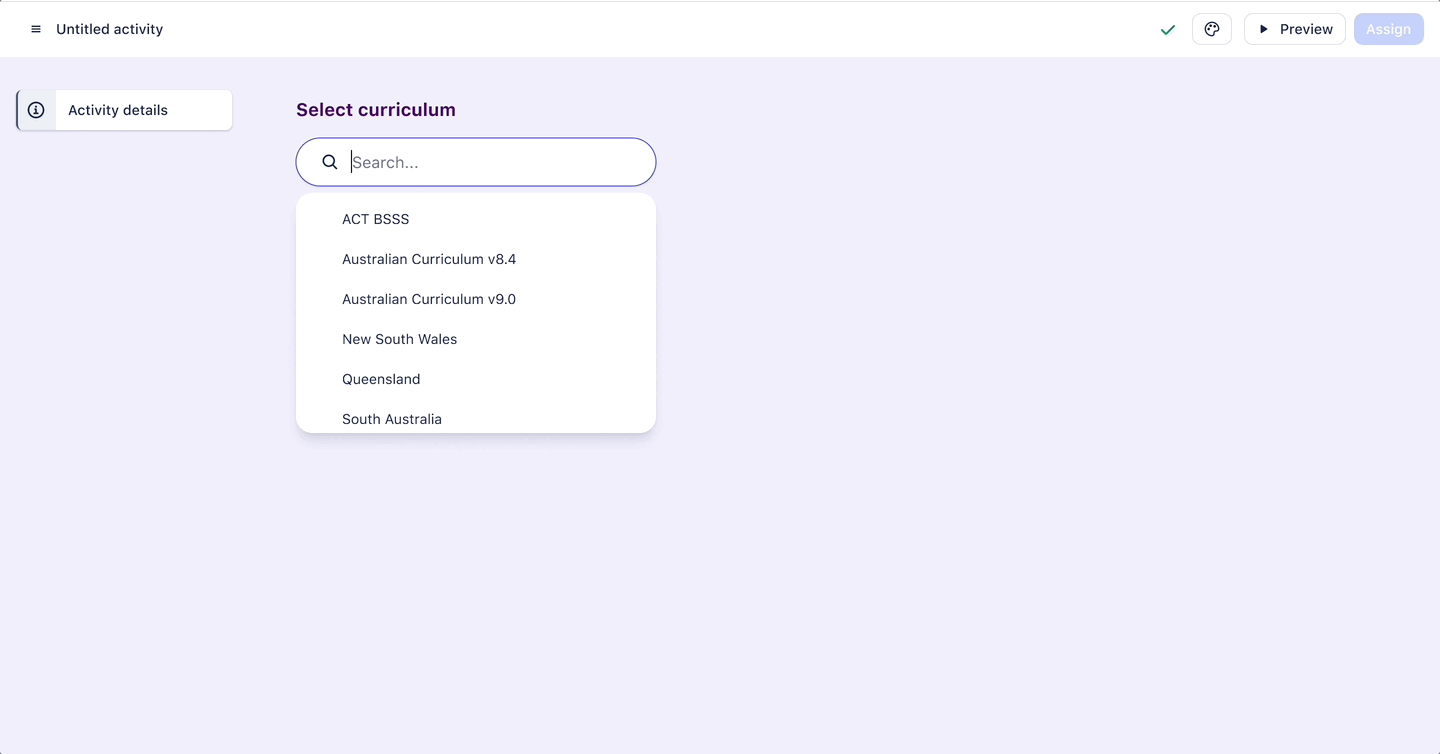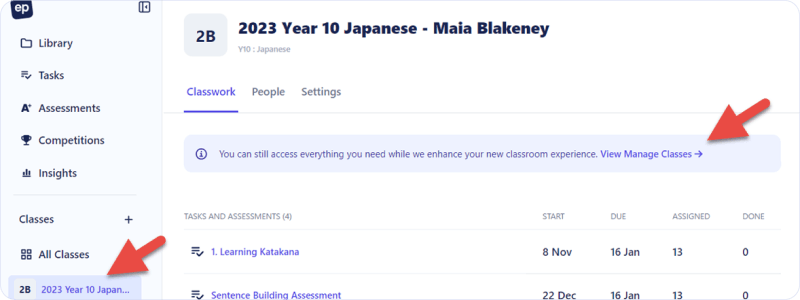You’ve likely seen, heard about, or directly experienced how Education Perfect is entering a new chapter, focused on more effectively supporting teachers in how they deliver Instruction, Assessment, and Practice in the classroom. We’ve launched new learning content, a re-defined assessment model that now delivers deep curriculum insights, new topic-based assessments, powerful new AI tools, and insightful analytics to supercharge the teaching and learning cycle.
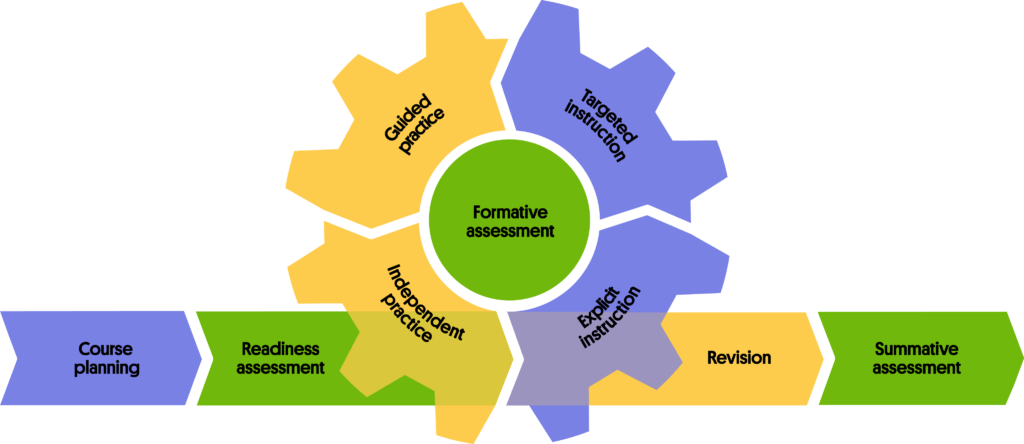
Underpinning all of this is the platform itself. What use are industry-leading tools if they aren’t easy to use, flexible, or trustworthy enough for teachers to seamlessly integrate into their day-to-day practice?
That’s why we remain deeply committed to enhancing the overall experience of EP. Our focus on quality, efficacy, forward-thinking solutions, and reliability means we can continue delivering new content and features that make it easier for you to enrich student learning and outcomes.
Looking ahead: what’s coming next?
I’m excited to provide a sneak peek at the changes EP has started to roll out and will continue to make more widely available over the next couple of months. These updates will continue to bring this vision to life in tangible ways that will enhance experience and amplify your impact. We understand that change requires adjustment, and we’re committed to making this transition as smooth and valuable as possible for everyone. Look out for further communications from us as these changes are made available in the product. Take a look:
Create beautiful activities, perfectly aligned to your curriculum
At EP, we know how much time and energy goes into creating great content. Finding the right resources, making sure they align with the curriculum, and keeping things fresh and engaging for students—it can be a heavy lift!
That’s why we’ve been working on something new. Soon, you’ll have a faster, smarter way to create your own beautiful, curriculum-aligned activities—right when you need them.
This upcoming feature lets you choose the topic, with EP’s AI-powered tools* supporting you to quickly turn your ideas into ready-to-use, curriculum-aligned activities—freeing up more time for what matters most – making more moments truly teachable.
Streamlined onboarding, navigation and subscription flexibility
Other upcoming changes are centered around streamlining how you navigate the EP platform, more subscription options, and making it easier than ever to get started on the platform.
- A navigation update will refine how you discover and navigate content and features across the platform, saving you time getting to where you need to go.
- We’re also introducing a Get Started onboarding experience in the product. This is designed to help new users get up to speed in using EP quickly.
- Based on your feedback, managing classes is getting easier: You will soon be able to easily personalise class avatars for quick identification in the main navigation, and access a new ‘Classes’ tab to efficiently manage Student’s classes.
- For administrators and teachers looking to expand their EP usage, we’re streamlining the trial sign-up flow for new subjects making it simpler to explore new possibilities with EP.
- We’re making changes to our subscription options and will offer subject and tier based subscriptions to provide schools with more flexible purchasing options and clearer access based on subscriptions.
Navigating change together
We deeply value your partnership and are committed to transparently sharing details about these updates and listening to your feedback throughout these next few weeks and beyond. Together, we will continue to enhance Education Perfect to best serve your needs and the needs of your students.
*All teachers can access and create activities with the new tool, however AI-powered features won’t initially be available for VIC and NSW Government schools. These schools will be notified as soon as access is available.
]]>Improving student outcomes requires more than one-time instruction—it calls for a continuous approach that guides learners from understanding to mastery. When tools support every phase of the learning cycle—from diagnostics and targeted teaching to practice, feedback, and progress monitoring—educators can respond more effectively to student needs and drive stronger results. That’s why boards are turning to solutions like Education Perfect to bring this full-cycle approach to life in classrooms across Ontario.
A Scalable Digital Solution for Math, Literacy, French, and Targeted Supports
Ontario’s 2025-2026 Education Funding highlights targeted funding to help school boards strengthen student outcomes in:
- Digital Math Tools (Grades 4–10)
- Literacy and Language Development
- French and Second Language Instruction
- Re-engagement, Credit Recovery, and Transition Programming
Education Perfect (EP) is a flexible, curriculum-aligned platform that allows your board to address these focus areas with a single, cost-effective solution.
Built for 2025-2026 Education Funding Priorities
Digital Math Tools
Support student learning with interactive, self-paced modules and auto-marked tasks aligned to the Ontario math curriculum. Teachers and administrators can identify learning gaps, assign targeted practice, and track growth with ease.
Literacy and Language Development (Available for the 2025-2026 School Year)
Offer differentiated reading, writing, grammar, and vocabulary instruction for elementary and secondary learners. EP’s literacy content will support both skill recovery and enrichment, using structured, scaffolded lessons.
French as a Second Language Instruction
Deliver core French programs with ready-made digital content that supports all four strands: reading, writing, listening, and speaking. Teachers can personalize instruction, and learners receive immediate feedback.
Re-engagement and Transition Support
Ideal for boards looking to support disengaged or at-risk students, EP allows for flexible learning models—virtual, in-person, or hybrid. Tools for credit recovery, foundational skill-building, and transition planning are built in.
Why Superintendents Are Partnering with Education Perfect
Empowering Educators, Amplifying Impact
When teachers are equipped with tools that support the full learning cycle, their impact grows. Education Perfect helps educators identify needs, deliver targeted instruction, and track progress—streamlining workflows while supporting every learner. The result: stronger teaching, better engagement, and improved outcomes across the board.
The EP Difference:
- Curriculum-Aligned: Developed to match Ontario’s curriculum expectations across K–12 subjects
- Quick to Deploy: Minimal IT lift and fast onboarding for teachers and program leads
- Actionable Data: Real-time reporting at the student, school, and board levels
- Flexible Models: Supports synchronous or asynchronous delivery across all learner types
- Built for Scale: Designed to support small pilots or board-wide rollouts
- Built for Differentiation: Easily tailor learning pathways based on readiness, language proficiency, or IEP goals—supporting every learner at their level
Designed to Maximize Impact and Funding Effectiveness
With provincial funding now available to invest in high-quality, digital instructional tools, boards have a unique opportunity to implement solutions that are:
- Evidence-informed
- Easily integrated
- Sustainable beyond a single program cycle
Education Perfect helps boards meet their strategic goals while addressing key 2025-2026 education funding objectives—throughout the school year, in-person and online, and throughout the summer school season.
Let’s Build a Plan Around Your Priorities
Our Ontario team is working with boards to deliver scalable solutions aligned with current and future ministry priorities.
Book a call to explore how Education Perfect can support your initiatives through the 2025-2026 education funding streams—and beyond.
]]>As a former Maths teacher, I’ve always believed that the true power of teaching lies in the impact we can make, both on individual students and across the school community. Over time, I came to see that teaching Maths isn’t just about helping students solve equations—it’s about building their confidence, enhancing their problem-solving skills, and creating a space where every student can thrive, both inside and outside of the classroom.
However, with all the modern demands of teaching, finding resources that truly engage students at a personal level became an ongoing challenge. I needed tools that could offer customisable content and assessments, data analysis, question banks and quality feedback, allowing every learner – no matter their level – to realise their full potential.
The Power of Personalised Learning
One of the biggest challenges in teaching Maths is addressing the wide range of abilities in the classroom. Some students pick up concepts quickly, while others need more time and support.
For me, having a library of customisable resources was a game-changer. It meant I could tailor the learning experience, assign tasks that matched each student’s needs, and adjust lessons on the go. As teachers, we know that no two students are the same, so having access to a vast range of questions and content helps bridge those gaps in understanding and reinforces key concepts.
Data-Driven Assessments for Student Growth
Throughout my teaching career, I always wanted students to leave my classroom feeling confident about maths. However, traditional methods of teaching didn’t always give me the immediate insight I needed to track and respond to individual progress in real-time. There were days when it felt like I was in the dark, not knowing if a student was struggling until it was too late.
Assessment is a key part of effective teaching, but finding time to create and administer meaningful assessments can be a challenge. It’s important to find a reliable maths platform that provides a wide range of customisable assessments for your specific teaching goals.
For me, EP Maths made this process much simpler and more impactful. Whether I was conducting a pre-test to gauge students’ understanding or a post-test to measure progress, the platform provided me with the support I needed. The detailed analytics helped me identify gaps in understanding and immediately intervene. This data-driven approach enabled me to monitor growth over time, ensuring that no student was left behind.
Instant Feedback with Real Results
Differentiation in Maths can be particularly challenging, but the right tools can make all the difference. Having instant feedback that includes step-by-step working formulas was essential for my students’ engagement and self-learning.
When students are provided with the means to learn at their own pace, to review feedback and try again, they grow not only as learners but as individuals. This is one of the greatest impacts we can have as educators.
Finding a platform with a differentiated working formula bar made all the difference to my classroom. This not only accelerates student understanding, but it also allows me to measure progress regularly and adapt lessons on the fly. I can actually see the impact I’m making day to day.
A Single Resource for an Engaged Community
One of the toughest challenges we face as educators is keeping students engaged, especially with a subject like Maths, which many perceive as intimidating. Using static or repetitive resources often fails to inspire enthusiasm. One of the reasons EP Maths stands out to me is its versatility and interactive features. Students aren’t just passively receiving information; they are actively participating in their learning. The platform presents problems in multimodal formats—videos, interactive quizzes, real-world applications—which appeals to students with different learning styles.
Increased engagement has an incredible ripple effect. When students are genuinely interested in what they’re learning, they become more involved in class discussions and create a positive classroom culture. I often saw students sharing tips and working together to solve complex problems. The sense of ownership they felt over their learning was clear, and it made a noticeable difference in their performance. The platform’s easy integration between subjects also makes it easy to encourage interdisciplinary learning, helping students see connections between different areas of study.
Leaving a Lasting Legacy
At the end of my teaching career, the moments that stand out most are when I could clearly see the positive impact I was having on my students. By using resources like EP Maths as a partner in the classroom, teachers can easily make that impact visible—whether it’s through personalised student growth, improved engagement, or stronger connections with their community.
If you’re an educator looking to deepen your impact, I encourage you to explore what EP Maths has to offer. It’s not just about teaching Maths—it’s about shaping confident learners who will carry those skills with them for life.
If you’d like to explore these EP Maths’ offerings in more detail, check out my EP Maths demo:
Or, if you’d like to see how these features can directly support your unique needs, reach out to one of EP’s Education Specialists for a personalised demo today!
]]>Education Perfect (EP) includes a set of lessons on Ocean Sustainability and every year we run a Sustainable Oceans competition. It is free to take part and all students with an active EP licence across Australia and New Zealand will automatically be entered. ‘Sustainable Oceans 2024’ kicks off on 5 June, so share this blog post with your colleagues and students and inspire them to join EP’s awareness raising efforts to save our oceans.
Why Ocean Sustainability Matters
The oceans cover over 70% of the Earth’s surface and are home to a staggering diversity of life, from the tiniest plankton to the largest whales. They provide numerous ecological, economic, and social benefits
Climate Regulation
Oceans play a crucial role in regulating the Earth’s climate. They absorb about 30% of the carbon dioxide produced by humans and generate more than half of the world’s oxygen through phytoplankton photosynthesis.
Biodiversity
The oceans are teeming with life. Coral reefs, for instance, support approximately 25% of all marine species. This biodiversity is not just intrinsically valuable; it also supports fisheries, tourism, and medicine.
Economy and Livelihoods
Over three billion people depend on marine and coastal biodiversity for their livelihoods. The global ocean economy, including fisheries, aquaculture, shipping, and tourism, is worth trillions of dollars annually.
Food Security
Oceans are a significant source of protein for billions of people around the world. Sustainable fishing practices are crucial to ensure that this resource can continue to feed the growing global population.
Despite these critical functions, our oceans are under severe threat from human activities. Pollution, overfishing, climate change, and habitat destruction are causing irreversible damage. Learning about and acting on ocean sustainability is not just a choice; it is a necessity.
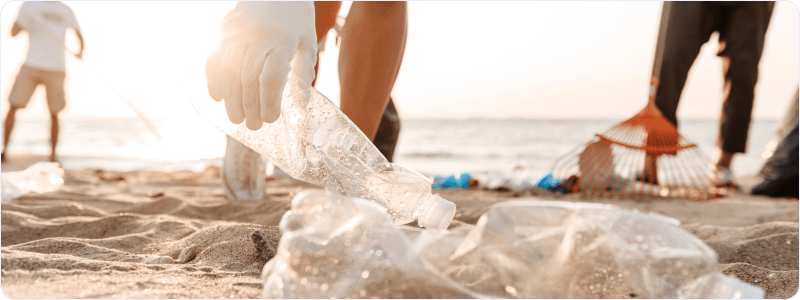
What We Can Do: Actions for Teachers and Students
To address the pressing issue of ocean sustainability, both teachers and students can take meaningful actions. Here are some strategies and activities to consider:
Education and Awareness:
Incorporate Ocean Literacy: Teachers can integrate ocean literacy into their curricula, covering topics such as marine biology, ecosystems, and the human impact on oceans. Understanding these concepts helps students appreciate the ocean’s importance and the need to protect it.
Promote Critical Thinking: Encourage students to think critically about the sources and consequences of ocean pollution and overfishing. Discussions, debates, and projects can help students develop solutions-oriented thinking.
Community Engagement: Organise or participate in local beach cleanup events. These activities not only remove harmful debris from shorelines but also raise awareness about the types and sources of marine litter. Or start a public awareness campaign. Students can create and lead campaigns to educate their communities about ocean sustainability. Using social media, posters, and community events, they can spread the message about reducing plastic use and protecting marine life.
Reduce, Reuse, Recycle: Advocate for reducing single-use plastics, reusing materials, and recycling. Schools can set up recycling programs and encourage the use of reusable water bottles and lunch containers.
Sustainable Seafood: Learn about and promote the consumption of sustainably sourced seafood. Teachers can introduce students to resources like the Seafood Watch guide, which helps consumers make ocean-friendly choices, and develop one specific to their own country or region.
Advocacy and Policy: Encourage students to get involved in environmental advocacy. They can write letters to legislators, participate in public forums, and support policies aimed at protecting marine environments.
Support Marine Protected Areas (MPAs): Educate students about the importance of MPAs, which are regions where human activity is restricted to conserve marine biodiversity. Supporting and advocating for the expansion of MPAs can significantly contribute to ocean conservation.
Citizen Science Projects: Engage students in citizen science projects that monitor ocean health. Programs like seabird or marine mammal sighting networks allow students to contribute to real scientific research.
Innovative Solutions: Encourage students to come up with innovative solutions to marine problems. Competitions, science fairs, and innovation labs can inspire students to develop new technologies or methods for reducing pollution and conserving marine life.

A Shared Responsibility
The journey towards sustainable oceans requires a collective effort from all sectors of society.
Education Perfect is committed to corporate sustainability. We aim to pursue responsible environmental strategies including influencing positive change on some of the world’s most critical challenges.
Teachers play a crucial role in shaping the next generation’s attitudes and actions toward ocean conservation. By embedding sustainability into education and fostering a sense of responsibility and stewardship in students, we can cultivate a culture that values and protects our oceans.
Students, as future leaders, scientists, and policymakers, have the potential to drive significant change. By learning about the challenges facing our oceans and taking proactive steps to address them, they can ensure that our oceans remain healthy and vibrant for generations to come.
Ocean sustainability is a pressing issue that demands immediate action. By working together, we can protect our oceans and secure a healthy, sustainable future for our planet. Take part in EP’s Sustainable Oceans 2024 Competition and raise awareness across your school. View our competition help guide here.
]]>Drawing from my years in education, I’ve collated five essential tips for educators to help their students excel while minimising workloads. With this guide, you’ll be relaxing by the sea a whole lot quicker, with a whole lot less stress.
1 – Provide exam-type questions
Success in exams largely depends on students’ familiarity with the format and types of questions they’ll encounter. By employing a platform like Education Perfect (EP), teachers can create bespoke, exam-type questions from scratch or use the platform’s multi-levelled, differentiated question banks to meet their learners’ needs. You can also use EP Studio to upload, adapt premade assessments or search for appropriate engaging material from teachers across the world, via our shared teacher community.
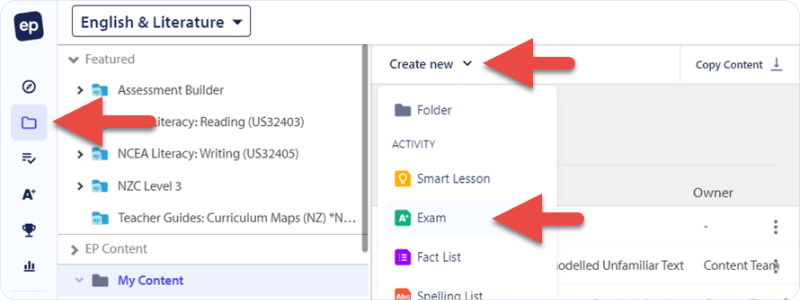
2 – Leverage automated marking and adaptive learning pathways
After assessments, the EP platform automatically grades short response questions and generates personalised learning pathways. These pathways help students address knowledge gaps through differentiated consolidation material, enabling independent learning without direct teacher intervention. The platform’s upcoming advancements in AI and automated marking for long response questions are worth keeping an eye on in the near-future.
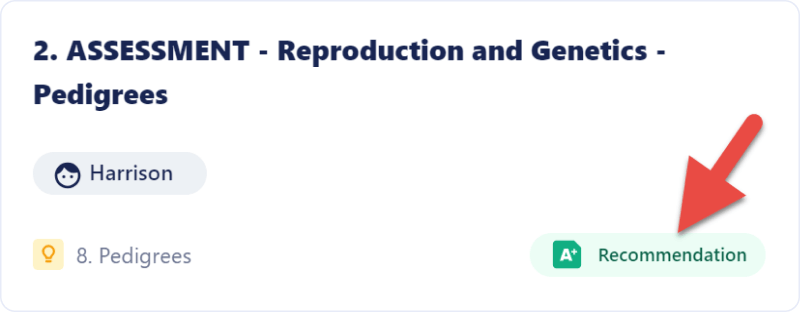
3 – Monitor progress in real-time and provide meaningful feedback
EP’s in-platform, live monitoring features allow teachers to track student engagement and performance remotely. This functionality aids in identifying areas of difficulty and providing timely feedback through audio and written comments, facilitating a proactive approach to student support.
4 – Manage your expectations
Setting achievable learning goals is critical. The EP platform enables educators to assign meaningful tasks and assessments with flexible conditions, such as multiple attempts or extended time for those who need it. This approach helps manage students’ cognitive load and prevents burnout by fostering realistic expectations and better time management.
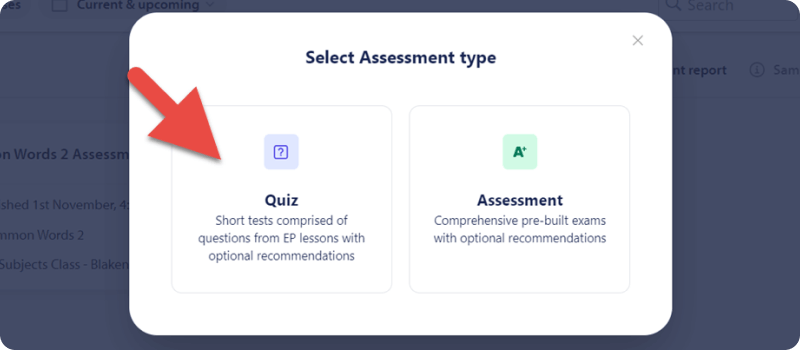
5 – Make it fun, varied and engaging for ALL students
If your revision material isn’t diversified, are you really challenging your students and encouraging them to learn independently? EP Studio allows the integration of multimedia resources, such as Youtube videos and interactive content, alongside gamification elements like the EP Dash Game. The lessons in the EP content library are “levelled” to meet the needs of all learners. When creating your bespoke assessments and revision quizzes, there is variety in all questions.

These tips are by no means exhaustive. There are so many other useful suggestions that can support students in this crucial part of the year. EP also offers free Professional Development (PD) and training opportunities to help educators maximise their EP subscriptions and best prepare their students for stressful exams.
Interested to learn how EP’s features can support your classroom needs? Reach out to your EP representative today

Ravi Sekhon | Customer Success Manager (MENA & Europe)
Ravi has spent 21 years in UK education, 13 years internationally. He has held several roles in educational middle management, such as Head of Mathematics, Head of Pastoral and Senior Teacher. Ravi is a keen advocate of educational technology and has helped many schools across Europe and the UAE establish their resources and, more specifically, the EP platform, into their workplaces.[/vc_column_text][/vc_column][/vc_row]
New beginnings, new opportunities, new resources!
Without the right resources, the start of a new year can also be a time of great anxiety for teachers and school leaders. If your heart skips a beat, we want it to be because you’re excited – not daunted.
With new demands placed on teachers’ shoulders every year, it’s easier than ever to burn out. It’s important to take steps to manage stress and make the transition back to school as smooth as possible.
Let’s dive into EP’s top tips for starting the new school year!
Reflect and reset
Before leaping into the new year, it’s useful to reflect on what did and didn’t work in the classroom in 2023. What could be improved? What helped you to deepen student relationships? Use this reflection time to set clear goals and intentions for the upcoming year. EP’s downloadable calendar is the perfect tool to help you chart out your objectives and stay organised throughout the year. Click below for exclusive access to your new calendar!
Set realistic resolutions
It’s easy to get caught up in the excitement and buzz of a new year. Setting realistic resolutions is key to identifying new aspirations and accepting your limits. Consider what you can realistically achieve in your classroom and school environments by taking inspiration from new places. EP’s recent Impact Study provides valuable insights into successful strategies adopted by other schools, including a reflection on 2022’s Australian NAPLAN results. This kind of objective data can help you tailor your goals for maximum student impact. Click below to read our 2022 Impact Report.
Engage students with real-world connections
Bring real-world relevance into your lessons to engage your students in practical, well-rounded ways. Whether it’s through practical case studies, virtual field trips, or bringing industry guests into the classroom, there are almost limitless ways to inspire your students. EP has a range of case studies from across Australia and New Zealand available for you to read through and garner insight from. The schools in each case study discuss relevant topics – from the power of formative assessments to how to enable differentiated learning approaches.
Cultivate a positive classroom culture
Create a classroom environment that fosters positivity, inclusivity and individualism! Start the year with team-building activities, icebreakers, and open discussions to gain an understanding of your students’ personalities and capabilities. Check out our blog for more ideas on how to build a supportive learning community within your classrooms.
Plan with precision
The best way to ensure confidence in a classroom is through organisation. Utilise our new downloadable teacher planner to meticulously plan your lessons, activities, assessments and ideas for the new year! Having a clearly visualised roadmap for the future will not only reduce stress, but also create a positive, structured learning environment for your students.
As we embark on a new academic year together, EP is prepared to equip you with the tools needed to make 2024 your best year yet. Explore our linked resources to craft your own colourful blueprints for success, and make the most of the digital tools ready and waiting for you.
Here’s to a fantastic and fulfilling 2024!
]]>What if you don’t know what you want to be when you grow up? What if what you will go on to excel at is a role in a field that doesn’t yet exist? What if you’re still ascertaining who you are and what you like – and separating that from the identity that is defined by parents, friends, and community?
What if students in your class are stuck on these questions? At the end of this year, as is true every year, many of our senior students are moving on from school. They might be off to uni, pursuing alternative studies, heading on a gap year or OE, or even joining the workforce. Our junior students have been choosing their subjects for next year, and dealing with what (for some) is possibly the first sets of exam results they’ll receive. The chances that the majority of these young people know, explicitly, what job title they want when they reach an age many of them can’t yet conceptualise are low. It’s not inconceivable then to identify that, while well meant, a simple question like ‘What do you want to be when you grow up?’ is placing pressure on teenagers to panic-plan for a future they don’t yet know is suitable for them. The Dell Technologies ‘Emerging Technologies’ Impact on Society and Work in 2030’ report, collated by the Institute for the Future (IFTF) and a panel of 20 tech, business and academic experts from around the world in 2017 estimates that as many as 85% of the jobs that will exist at that stage in the future have not been invented yet. The way that we approach work is evolving even now – and will continue to change as today’s children mature into tomorrow’s working adults. Teachers are often the trusted adults a student may turn to and can be of great support to a young person trying to ascertain where they will fit into the working world post-school. Limiting the possibilities when students are in that exploration phase can have a real impact on ambition and dreams. Personally, I was lucky, in a way – I was able to discover what I wanted to become when I grew up after I’d actually started to grow up. For me, it took a student exchange, university and a gap year in Japan before the epiphanic moment where I realised my path (at that stage) lay in the classroom. I wanted to be a teacher – and I was 21, living halfway across the world, four years out of high school and with a degree behind me when I realised that.
At that stage, the industry where I eventually found my niche had not been conceptualised, let alone developed.
I ended up leaving teaching after 11 years in the classroom to take my next place in the world, in a job that sees me supporting teachers, public speaking, advocating for my passion area and generally (hopefully) having a positive impact on teaching and learning. There was no possible way, at 13, at 16, or even at 23 that I could have targeted EdTech and my career trajectory. How could I aim for a future I had no idea existed? What I did was identify my passion, and build my education around what I enjoyed, had skill in, and wanted to see if there were career options for. In the 1990s, this was tough at times. Languages weren’t seen by everyone as a viable career choice – I was challenged by those in my community, including teachers, family members, and peers to follow my passions, yet those passions led to my dream job. A little nurturing and solid career advice based around that could well have alleviated a lot of frustration and stress for teenage me. Those are the conversations we should be having with our students. You have students like me in your classes – students who are skilled in subjects that are optional electives – or have skills that don’t feature as part of the current curriculum at all. These students are often worried that because their skills and interests don’t fit into a standard ‘job title’ they won’t be able to find a job they love. These conversations don’t need to be isolated to a Careers Counsellor – if students are able to hold these conversations with teachers they trust and respect, and who know the students well, a really powerful conversation becomes possible. Most countries have a government-sponsored website that offers excellent region-specific tips to think about career planning as a schoolwide approach – a great place to start thinking about how you can support your students to plan for a future they feel good about.
Individual agency is second nature. Questions are more important than answers.
Performance strategist Laura Garnett makes the point that “The answer always lies within us–it just takes some time to excavate. Asking questions is a great way to be more objective about your situation and to discover new things about yourself and the path you want to be on.” If we move the dialogue from ‘What job title do you want?’ to ‘What are you passionate about? What makes you happy? What is the contribution you would like to make to the world? Is there a career opportunity in that? Can you create one?’ we start to take the pressure off students to make that decision. With that pressure off, they can explore their passions, and create a life where they want to go to work, enjoy what they do, contribute positively and are happier. Sure, it’s not as simplistic as ‘Pick something you like, then do that’. Students still need to focus on mastery of literacy and numeracy, no matter their job. They need 21st-century skills like collaboration, digital literacy, critical thinking and an ability to adapt to an ever-evolving world so that they can learn the new skills that will become necessary as they complete their education and enter the adult stage of their lives. They need to learn that having a range of skills sets you up better to identify what you like, and what you are good at – so they need to learn that they can’t always be 100% focused on what they love; there are always compromises on the path to success. They need to accept that teachers and schools are making educated decisions about programme choices, and their passion area may not be available at their school. But passions matter too. There are also definitely those who do know what they want to do when they grow up, leave school, and join the workforce. They may have known their whole lives. They may have decided recently. But they know. Many of these students, though, may well go on to change their minds, and in a way, that’s almost more terrifying than not knowing at all. By creating an environment where it’s okay to know, it’s okay to not know, and it’s okay to change your mind about the important things, we are empowering students to really consider their options, and approach the future thoughtfully – and with less stress. That’s worth considering.
It’s okay to change your mind.
]]>Our oceans are beautiful, magical places. From the vibrant colours of warm water coral reefs to the gracefully swaying underwater cathedrals of cold water kelp forests, our oceans are teeming with life. All these creatures are connected in an intricate web of interdependence, where the actions of one can have complex consequences for the rest of the ecosystem.

It’s easy to forget, but we too are a part of this ecosystem. This means both that our actions have far-reaching consequences for our oceans, and also that what happens in our oceans has significant consequences for humanity.
Over the last 50 years we have put increasing pressure on the oceans from a number of fronts:
- Our release of greenhouse gases into the atmosphere has raised ocean temperatures and made our seas more acidic, causing numerous mass coral bleaching events and large-scale die-offs of kelp forests.
- We have discarded an estimated 5.25 trillion pieces of plastic into the oceans, which have broken down and entered the food chain, with dire results for ocean inhabitants -, particularly seabirds.
- Our increasingly sophisticated fishing technology has allowed us to seek out and harvest fish stocks from every corner of the planet. It’s estimated that we’ve fished out 90% of the large predatory fish in the ocean and that 80% of global fish stocks are either fully exploited or over-exploited.
- As well as harvesting these fish, we have degraded or destroyed significant tracts of their habitat, reducing their ability to recover. The primary culprits here are the clearing of mangrove forests, destructive fishing techniques such as bottom trawling and dredging, and runoff from cleared land and agriculture.
We’re at a crucial juncture with our oceans. At the dawn of the industrial revolution 150 years ago, the oceans were seen as boundless resources – anything we did was “but a drop in the ocean”. Our technological advances since then mean that this no longer holds true, and we need to act rapidly to avoid doing permanent harm. The United Nations has realised this urgency and has declared 2021-2030 to be ‘The Ocean Decade’.

So what’s to be done, and in particular what can I do?
This is a question we’ve been asking ourselves for a number of years. While many of these issues will require a component of government policy change, we’ve identified a number of simple behaviour changes that we can all make to get the ball rolling.
Here are six simple changes we can all make:
- Take an interest in what’s happening down at your local beach, or even better, put on a snorkel or some scuba gear and see what’s going on underwater in your neighbourhood
- Eat seafood responsibly. Take an interest in what you’re eating and look up how it’s harvested. Try to only eat sustainably fished or grown seafood. Australians have a sustainable seafood guide published on https://goodfish.org.au/, while New Zealanders have one published by Forest and Bird (https://bestfishguide.org.nz/)
- Reduce our consumption of red meat. Cows and sheep are unfortunately very inefficient ways to feed ourselves due to the methane they produce, the amount of land and water they require, and the use of supplementary feed to hasten their growth. New Zealand and Australia have a long heritage as dairy and sheep farmers, so this is going to be a gradual transition for many of us, but we can each make a start. Try starting off by finding one meal a week where you can swap red meat for a vegetarian protein source such as beans or lentils.
- Optimise how we get around. Compared to each of us driving our own vehicles, car pooling, taking public transport, or cycling all produce fewer greenhouse gas emissions.
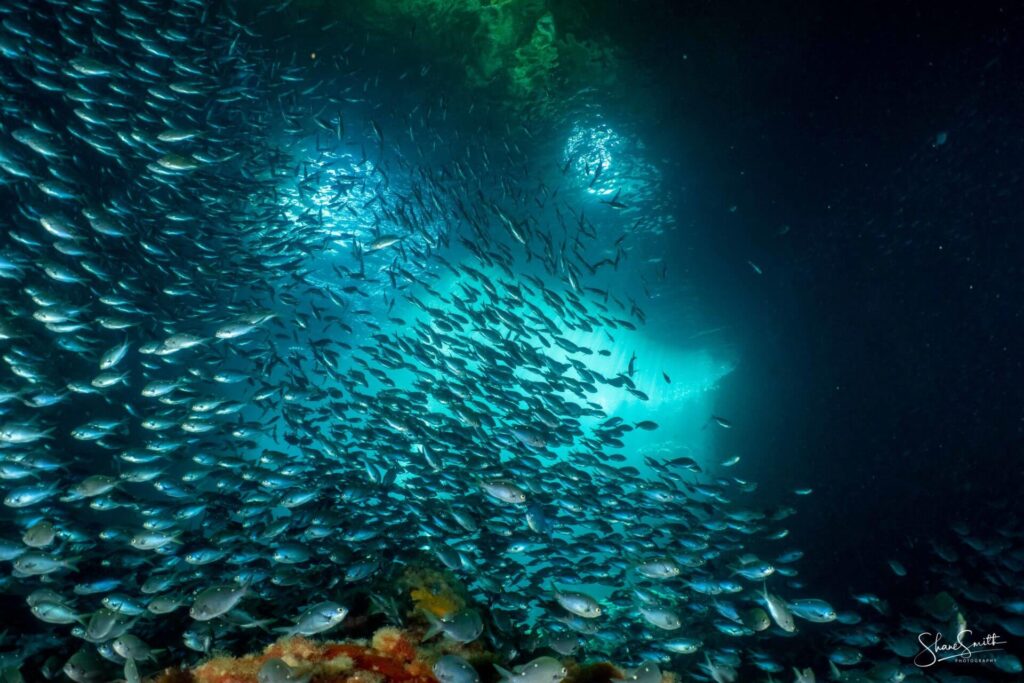
Does it really need to be wrapped in plastic?
Where possible, avoid plastic packaging, particularly for single-use items. Thanks to our consumer demand, businesses are waking up and switching to more sustainable packaging options.
This is no “holier than thou” preaching. I have to admit that I’m far from perfect when it comes to always remembering to action these ideas, but I am trying to integrate these changes into my life too.
Empowering the next generation
School-age students today are acutely aware that the world they’re inheriting is not the world that their parents grew up in. This has led to a range of reactions, from the palpable anger expressed during the 2018 climate change protests to an ongoing background “climate anxiety”. We wanted to give students both the knowledge that they need to understand the range of issues facing our oceans, and also a set of proactive steps they can take to minimise their footprint on the oceans. To achieve this, we’ve partnered with Education Perfect along with teachers in Australia and New Zealand to deliver a set of lessons focused on Sustainable Oceans.
The lessons have three key messages:
- Our oceans are amazing, extremely important to humanity, and worthy of protecting.
- Our oceans are currently facing a number of specific threats.
- While we can’t individually solve these problems, there are a range of simple changes that we can make to our lives to minimise our impact on them.

These lessons will be made freely available to all students in Australia and New Zealand. We will also be running a competition on Education Perfect coinciding with World Ocean Day to promote the lessons and encourage students to engage with them.
These lessons are our first attempt at engaging with these issues in the public domain. We’ve tried to focus on solutions rather than placing blame. We want students to walk away feeling empowered rather than thinking the situation is hopeless (which it isn’t). As with everything, a first attempt is seldom perfect and we’re sure that there will be room for improvement and iteration, so we welcome feedback on how we can make these lessons a better resource for all of our kids.
]]>